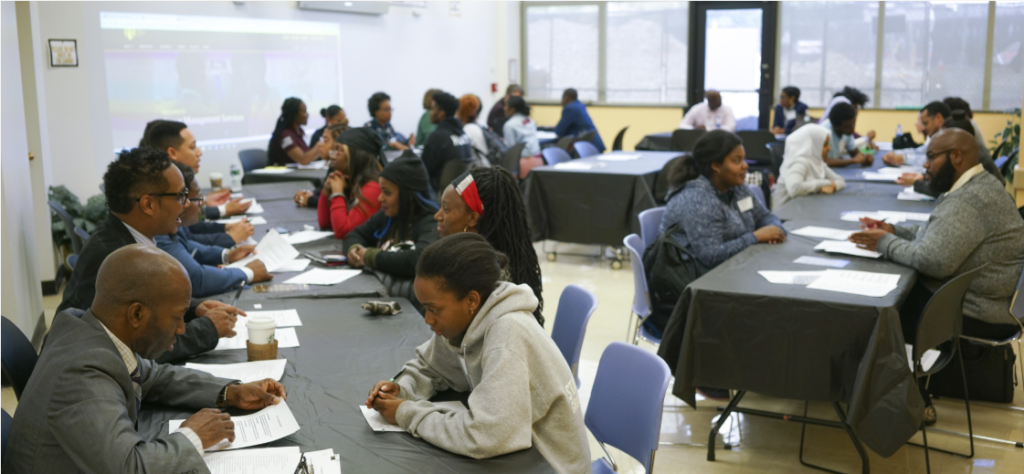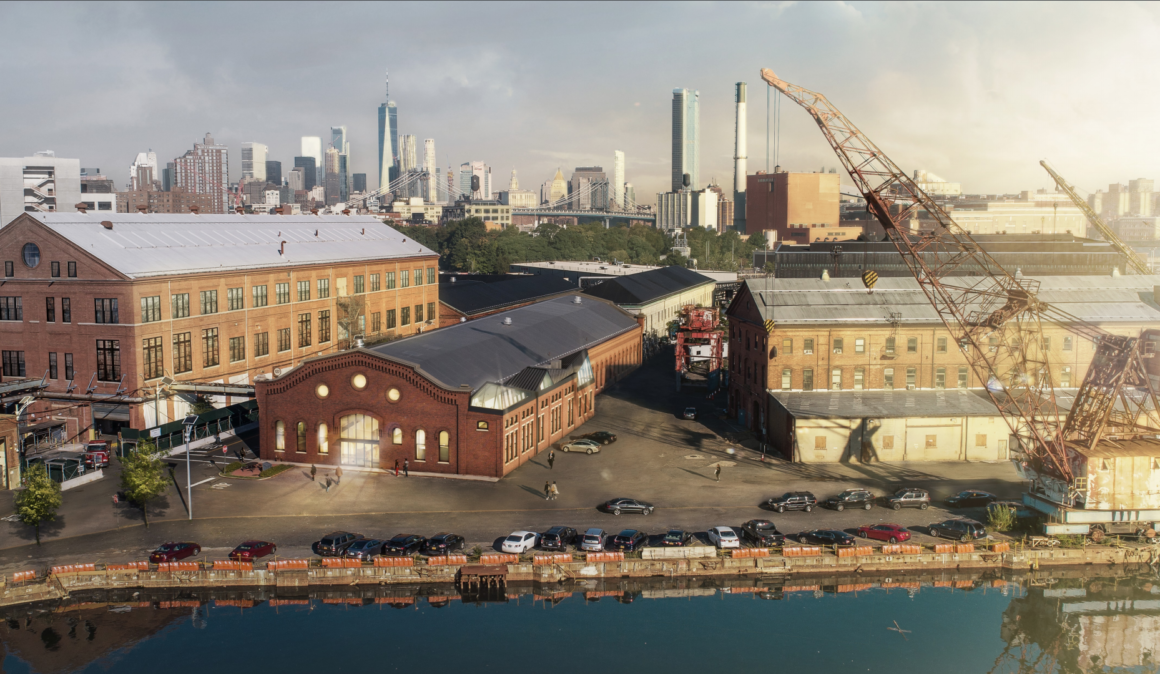You walk into a factory, and instead of hundreds of assembly line workers wielding clunky machinery, it is lined with small, sleek devices. You greet a device, “Hi Ada, look for defects.” Ada scans a chip that your aerospace company has tried to manufacture for years. Before you sip your matcha latte, courtesy of an automated barista, Ada already responds: “We found five defects. Here is how we recommend to proceed.”
Welcome to the “smart factory” of the future. Or, actually, of next year, at Nanotronics’ factory in Brooklyn’s Navy Yard. As Nanotronics sees it, the Navy Yard may once again be America’s manufacturing powerhouse, as it was in the 1940s, but in a different way and promising Brooklynites benefits similar to what the Industrial Revolution brought: high-quality and high-paying jobs.
Although the company’s product also will help eliminate some jobs. Nanotronics’ builds artificial intelligence and microscopic imaging hardware and software devices. These devices help companies in industries — from pharmaceuticals to aerospace — automate their manufacturing processes.
In the soon-to-open smart factory, a client can make a request to Nanotronics. The request can be mocked up by a Nanotronics designer, created by the company’s machines, and vetted by a solutions architect—all in the same day and same place, the smart factory. This concentrated process will help their clients to have “smaller factory footprints” by reducing waste, and decreasing time between research and production, according to Nanotronics Chief Communications Officer Mary Cunney.
The Brooklyn Navy Yard served as an active shipyard for the United States Navy for 165 years. At its peak, 70,000 people worked in the Yard in World War II, according to the Brooklyn Navy Yard Development Corporation.
Since then, more than 125,000 manufacturing jobs have been lost in New York. But in the last five years, there has been a resurgence of new manufacturing jobs in Brooklyn. The technology sector is Brooklyn’s fastest growing and highest paying sector. The 1,350 tech companies in Brooklyn pay an average of $92,900, according to the New York State Comptroller.
Nanotronics, founded by Matthew Putman and his father John Putman, in Cuyahoga Falls in Ohio, has raised $49.9 million. Its board is decorated with tech titans like PayPal founder Peter Thiel. The company expanded to Brooklyn in 2014 to work at Pioneer Works, an arts and science incubator, then moved to the Brooklyn Navy Yard in 2016. This year, Governor Andrew Cuomo invested $11.4 million in an “innovation” grant for Nanotronics to open a high-tech factory, saying in a press release that the “state-of-the-art manufacturing center will generate jobs, spur investments, and build a stronger economy.” It is currently under construction, and is expected to open by the spring of 2020.
Katie Beck Sutler, the Brooklyn Navy Yard Development Corporation’s Vice President of Workforce Development, says as more companies grow at the Yard, the need for employees with diverse skill sets grows too. Nanotronics expects to create 190 new jobs when the factory opens at the Yard. A Nanotronics employee salary ranges from $57,000 to $130,000, according to Glassdoor, a company review website.

Are smart factories a good thing?
Some Americans fear that advancements in artificial intelligence and smart factories will lead to lead to less of a need for people. United States Presidential Candidate Andrew Yang believes AI will displace large numbers of workers. According to his campaign team, Yang’s signature policy, granting $1,000 per month to US citizens over 18, is a way to help compensate for the loss of jobs to technology.
Nanotronics’ Director of Community Engagement, Dominique McDuffie says automation “is inevitable, and here already.” She argues that instead of leaving local people behind, Nanotronics works with the Brooklyn community “to not be afraid and to have a seat at the table to redefine what AI looks like.” Nanotronics facilitates technical training programs to equip local people for jobs at the Yard.
The company puts faith in the future. Putman, on the Nanotronics blog, says, “we know, just outside our doorstep, that young people are thinking of innovations and inventions that we could never imagine.”
McDuffie dedicates her time to helping local Brooklynites, young and old, find career opportunities in new technology fields. Among the seven community partnerships Nanotronics has, McDuffie works closely with Brooklyn Navy Yard Development Corporation on its partnership with the Brooklyn STEAM Center and the Onsite Employment Center.

The STEAM Center is a two year program for 350 high school students from eight Brooklyn public high schools. Each student graduates with a larger professional network, a work portfolio, and a technical skill in science, technology, engineering, arts, or mathematics. Students spend half the day in school and the other half at the Center. Beck Sutler “wants to close the gap” between what students learn in school and need to succeed at work.
STEAM students build relationships with Nanotronics employees through facilitated classes and internships. Audrey Washington, who lives six blocks away from the Yard, began at Nanotronics as an Information Technology intern and now is a full-time Technical Database Engineer, helping to create artificial intelligence devices. Like Washington, many students return to Nanotronics. To McDuffie this is a “testament to the program.”
The Employment Center hosts a bi-weekly meeting for middle to lower income community members. “We connect the dots,” says Beck Sutler, whose team matches these Brooklynites to available roles—from carpenter to software engineer—at the Yard. This year, 3,000 Brooklynites came to the Center and nearly 600 were hired by an employer at the Yard.
Alex Weinstock, who lives ten blocks away from the Yard, came into the Center and was first hired by Nanotronics as an Administrative Assistant. He now works as a data miner for artificial intelligence detection.
We are still months away from the opening of this Silicon Valley startup/World War II shipbuilding factory hybrid. But, for now, Brooklyn Navy Yard’s partnership with Nanotronics to support the local community is a “blueprint for how workforce development should be for other cities in the United States,” says Beck Sutler.
Are factories like Nanotronics a path to a future for new manufacturing jobs? Civic leaders hope so. Lieutenant Governor Kathy Hochul, who represented Governor Cuomo in the smart factory’s groundbreaking ceremony, believes that the next generation of Brooklyn innovators will retain long-term careers through the smart factory. She sees a rebirth, “Nanotrics’ new space is the start of a new industrial revolution.”


Leave a Reply